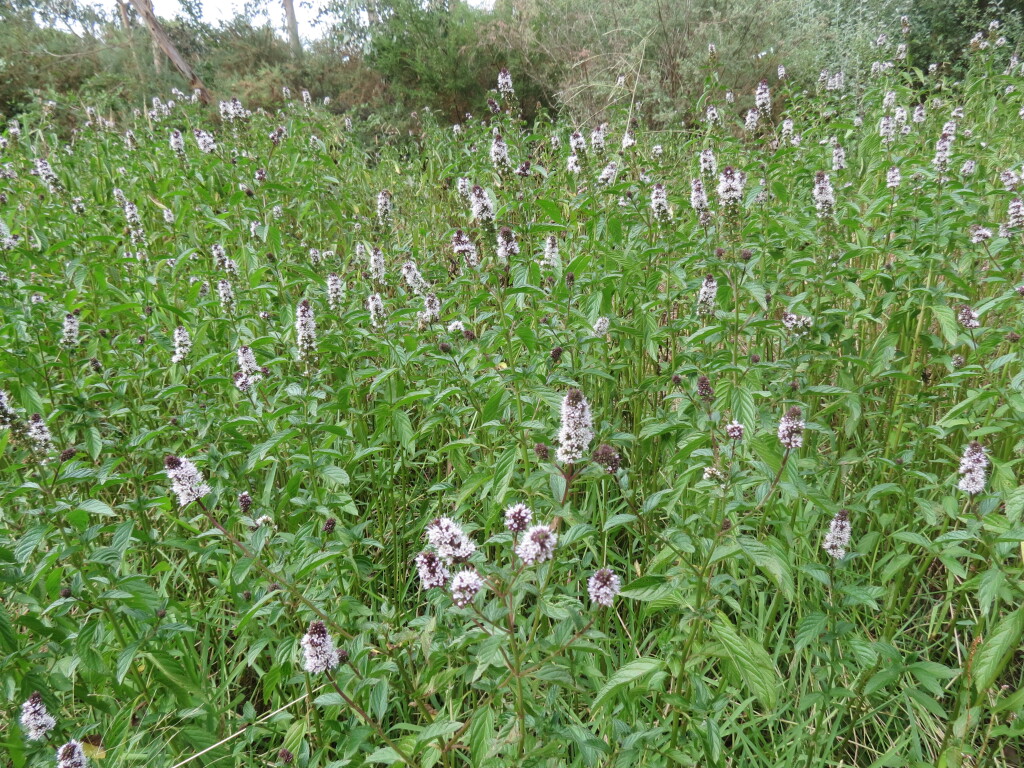Mentha ×piperita
L.Ascending to erect herb to 80 cm high, often rhizomatous, frequently rooting at the nodes; branches glabrous or with a few scattered hairs, often reddish- or purple-tinged. Leaves narrowly to broadly ovate or broadly elliptic, 15–90 mm long, 10–30 mm wide, glabrous or with scattered hairs, apex acute or obtuse, margin serrate to dentate; petiole 0–15 mm long. Inflorescence terminal, ovoid to spike-like, 1.5–6 cm long; flowers in dense, many-flowered clusters, internodes usually obscured; pedicels c. half to equal to calyx. Calyx 2.5–4 mm long, 10-veined, lobes c. half as long as tube, glabrous or with scattered hairs along medial ridge and often ciliate on lobe margin; corolla lilac to pink, exceeding calyx by 1–2 mm, lobes 1–1.5 mm long, the posterior one emarginate to bilobed; anthers included. Flowers Jan.–Apr.
VVP, VRiv, GipP, WaP, Gold, CVU, EGL, EGU, HSF, HNF, Strz, VAlp. A (normally) sterile hybrid between the European species Mentha aquatica L. and M. spicata L. Scattered in cooler parts of the State, in permanently wet or damp sites (e.g. Chapple Vale, Daylesford, Dandenong Range, Warburton etc.).
Two varieties (often treated as cultivars, nothovarieties or nothomorphs) occur in Australia. Other selections from within the diversity of the progenies of the parent species are sometimes encountered in horticulture.
Conn, B.J. (1999). Lamiaceae. In: Walsh, N.G.; Entwisle, T.J., Flora of Victoria Vol. 4, Cornaceae to Asteraceae, pp. 418–459. Inkata Press, Melbourne.
 Spinning
Spinning